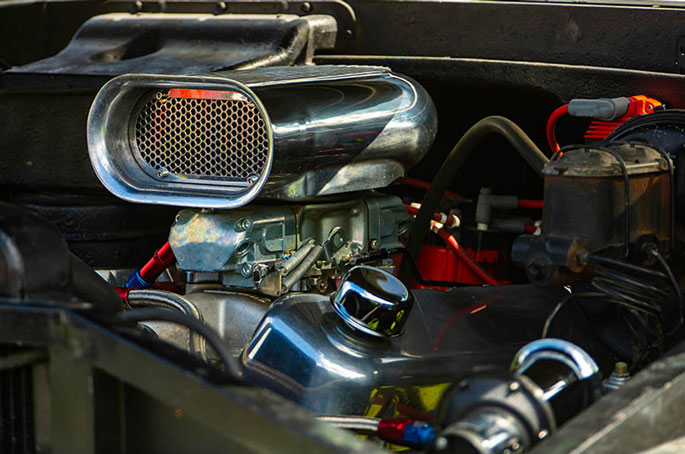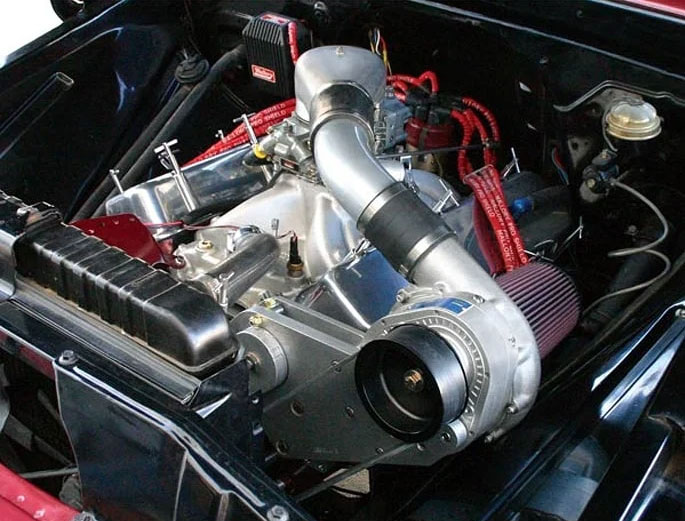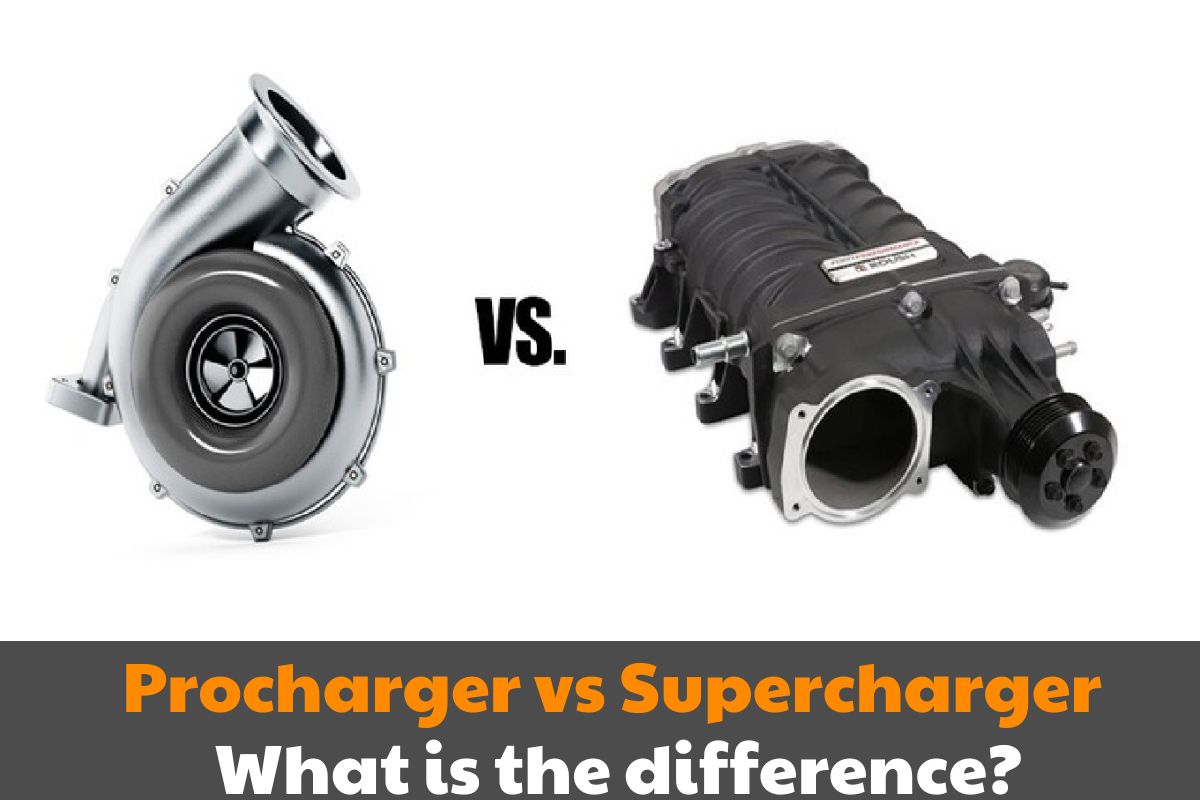Advantages of a Procharger vs Supercharger
“I have been researching the benefits of Prochargers compared to other brands of superchargers, such as Whipple or others. While standard superchargers use exhaust-based systems to generate boost, Prochargers are belt-driven. However, I am still trying to find a compelling reason why a belt-driven system might be preferable.
In summary, when considering a supercharger, it is essential to understand the advantages offered by a Procharger. Exploration of these benefits will provide valuable insights for making an informed decision.”
Procharger vs Supercharger: What is the difference?
Both the supercharger and the procharger function similarly by enhancing the horsepower and efficiency of your vehicle. These mechanisms increase the intake of compressed air into the engine, leading to improved fuel combustion. This results in greater performance and fuel consumption optimization.
1. The Performance
Before proceeding, it is crucial to identify your performance objectives as both superchargers and prochargers bring different benefits in distinct ways.
Superchargers have the capability to extract more power from the engine, although the power may arrive in spurts instead of continuously. While the degree of lag is minimal and barely noticeable to some, it is still considerably less compared to turbochargers, which is why they tend to be more expensive.
On the other hand, prochargers are renowned for providing a more consistent stream of power compared to superchargers. However, it is important to note that you may not achieve the full benefit if you desire maximum output from a procharger.
Notably, unlike superchargers, most prochargers do not require extensive modifications to the vehicle, making it an additional factor to consider when determining significance.
2. Maintenance
Superchargers can exert strain on the engine, necessitating closer monitoring of oil levels compared to regular engines. Enhancing the quality of gasoline you use may assist in prolonging the engine’s lifespan. However, it is important to research whether your specific vehicle is compatible with premium gasoline before making any adjustments.
Maintenance and upkeep play a crucial role in mitigating any additional stress caused by the supercharger. Ensuring a tight check on the automatic transmission is essential.
Furthermore, both superchargers and prochargers utilize a driving belt, which requires frequent maintenance to ensure optimal performance. Most drive belts should be replaced between 45,000 and 80,000 miles.
3. Price
Investing in enhancing the strength of your automobile can be an exciting endeavor, although it comes at an additional cost. While it’s true that the increased value of your car may not fully justify the investment, there are still options to consider, especially if you’re working with a limited budget.
Let’s focus on the difference between a procharger and a supercharger. In most cases, a turbocharger tends to be the most cost-effective alternative, typically available for $2,500 or less. However, it’s important to exercise caution when considering the quality of such options.
Remember, the cost you pay is directly related to the power and durability you’ll receive. Whether you choose a supercharger or a procharger, both options will provide you with what you’ve paid for.
If you’re looking for a long-lasting and reliable source of power, it may be worth considering a slightly higher investment beyond the basic choices. With a traditional roots supercharger, it’s possible to find a good enough option within the $2,500 to $3,000 range.
If you’re hesitant to invest in a supercharger without being able to utilize its full potential, it’s important to consider the legal restrictions that may apply in certain areas. In such cases, opting for a procharger could be a more sensible choice, as it can help you avoid potential penalties and traffic citations.
Although the initial cost of a procharger may be higher, it offers several long-term economic benefits. For instance, the procharger consumes less gasoline compared to conventional superchargers, making it a more fuel-efficient option.
Additionally, the procharger helps reduce engine stress, resulting in fewer maintenance issues when proper care is taken. This is in contrast to the challenges that may arise when using a supercharger.
While a supercharger may have a lower upfront cost, it can prove to be more expensive in the long run. On the other hand, if you can afford to pay more upfront, choosing a procharger will ultimately save you money over time. If you’re willing to wait a little longer for a better device, it’s worth postponing your purchase.
What is a supercharger?
Superchargers are an affordable way to boost horsepower, but with several types to choose from, it can be confusing. Fear not, as this guide will help you choose the right supercharger for your car.

Although the many styles of superchargers allow for versatility, their size can require some hood modifications to fit properly.
One popular option is the Roots supercharger, which boasts a simple design but delivers impressive horsepower gains. The mesh lobes in this type of supercharger push air back and forth to build up pressure in the intake manifold. Each burst of air generates an exhilarating surge of power that will leave you breathless.
So if you are looking to add some serious muscle to your ride, consider installing a supercharger!
Twin-screw and Roots are the two most popular superchargers available in the market. The Roots model is bulkier, while the former uses two long, screw-like parts to create pressure to build up the air supply.
Even though twin-screw variants occupy lesser space and have quick power activation, the noise levels require sound suppression which could get costly.
Nevertheless, superchargers offer drivers immediate access to generated power, but shorter spurts of air hit the engine could slow cars down.
As a downside, the system can lower fuel efficiency and may prove pricey to maintain performant cars since it uses the engine for power.
-Roots Supercharger
Superchargers utilize spinning meshing lobes for air transfer, creating positive pressure inside the intake manifolds as the air continues to enter.

With their oversized appearance and distinguishable bulge, they sit atop engines like the classic muscle cars from old photos.
However, due to their bulky nature and inability to deliver consistent air streams, they have become less practical compared to their modern counterparts.
-Twin-Screw Supercharger
Twin-screw superchargers have garnered the reputation of outperforming their notorious cousin, the roots supercharger, all thanks to their distinctive design. Air is drawn through worm-like gears, where meshing lobes trap it in pockets. As the air moves from one side to the other, the rotor lobes converge into a conical taper, compressing it, and reducing its volume.
When compared to the roots supercharger, some twin-screw superchargers sit atop the engine, but with a higher price tag. Though, users need to keep in mind that these superior versions are known to be louder, and some sort of noise suppression system may be preferable.
-Pros:
- There are numerous variations available in the market.
- The gas pedal provides a quick power boost upon initial touch.
-Cons:
- More voluminous
- Low fuel efficiency
- Irregular air provision
- Alters the appearance of the vehicle upon installation
What is a procharger?
Prochargers are a powerhouse of performance-enhancing might for your vehicle. These brand-name centrifugal superchargers are incredibly precise and can add an impressive amount of muscle to your car.
But how exactly do Prochargers work their magic? Firstly, unlike your run-of-the-mill supercharger, they don’t use a rotor. Prochargers deploy a fast-moving impeller to draw air in and be compressed. Once the air gets to the center of the impeller, it’s then radiated outward by robust centrifugal force. A diffuser surrounding the impeller then directs the compressed air to reach high pressure, ensuring that it’s continuously moving in a steady stream to the engine.

The result? A smooth increase in power with no lag. So it’s no surprise that Prochargers have become a favorite go-to for those seeking efficient and steadfast performance solutions for their vehicles.
The Procharger is attached directly to the engine, meaning no significant modifications are required. Plus, they’re usually legal and don’t exceed the power limit that many superchargers do.
However, it’s worth noting that the Procharger can be a bit pricier than other alternatives. Plus, they do emit a loud whine when in operation. Despite that, they’re still an excellent choice for anyone wanting to boost their vehicle to new heights of power and performance.
-Pros:
- Delivers clean and consistent power that is streamed at a constant rate.
- Easy to attach to the front of the engine as it is lightweight, unlike installing it on top of the engine.
- The power delivery of the device is more similar to a turbocharger.
- Sounds amazing.
-Cons:
Those who do not like the sound are disapproving of the engine’s distinct whining sound when revved.
Conclusion
Choosing between a Procharger vs Supercharger to enhance your car’s performance can be a challenging decision due to the wide range of options available. Before making a choice, it is important to consider all aspects and weigh the benefits. The excitement of upgrading your vehicle and unlocking its full potential can be truly exhilarating.
TAG: difference between procharger and supercharger, what’s the difference between a procharger and a supercharger, what is procharger vs supercharger, what is the difference, between a procharger and a supercharger, difference between a procharger and a supercharger, is a procharger better than a supercharger, procharger vs supercharger difference, procharger vs supercharger sound, what is the difference between a supercharger and a procharger, is a procharger and supercharger the same, is procharger better than supercharger, what’s the difference between supercharger and procharger



I’m Timothy Ballard, owner of a used car dealership in Springfield. I love just about everything automotive, but I have a special place in my heart for trucks. I’m an ASE Certified Master Technician, so I know my way around a car. In my spare time, I enjoy traveling with my family and hiking new trails.

Superchargers are typically belt-driven and can be classified into two primary types: Centrifugal superchargers and positive-displacement superchargers. Centrifugal superchargers, such as Prochargers, offer a more compact design and slightly higher efficiency. On the other hand, positive-displacement superchargers, like those manufactured by Whipple, excel at lower revs. By combining these two types, drivers can achieve optimal performance across various engine speeds.
Although I have been researching, I have not discovered any compelling reasons why one would choose a Procharger over other Supercharger brands, such as Whipple or others. Prochargers operate through a belt-driven system, in contrast to the exhaust-driven systems used by standard Superchargers to generate boost. However, the advantages of a belt-driven system remain unclear to me. I would appreciate your insights on this matter.
The correct understanding of superchargers is that they are all belt driven. It is important to note that when a supercharger is driven by exhaust gases, it is referred to as a turbocharger.